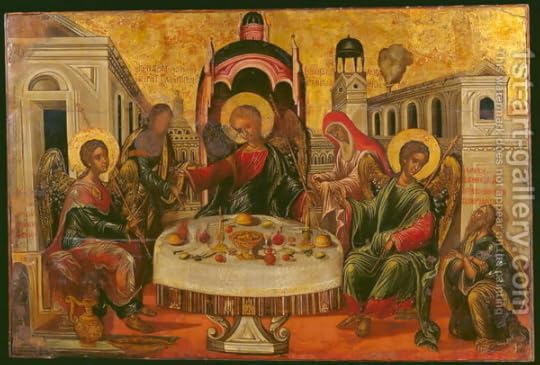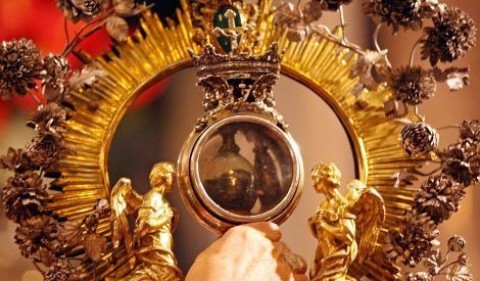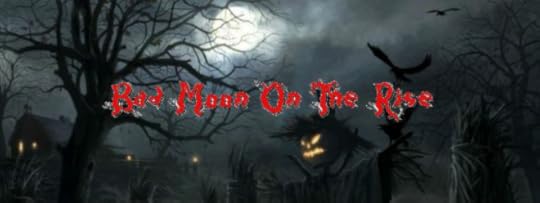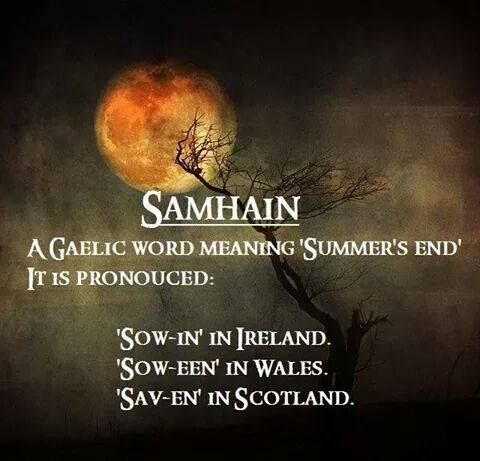Stephen Morris's Blog, page 41
November 2, 2015
The Undead… and the Saints

Bela Lugosi as the most famous portrayal of Dracula, the most famous of the Undead.
Happy birthday to Bram Stoker, the father of the modern vampire story, on November 8! (This also happens to be my granddaughter Sophie’s birthday, so “Happy Birthday!” to Sophie as well!) Vampires, known today for attacking the throats of the living, are perhaps the most well-known category of a class of beings known collectively as “the Undead.” (The Undead was also one of the possible titles Stoker considered for his novel before selecting Dracula!)
The undead (also known as revenants) are creatures that were once living humans but are now deceased and yet continue to act as if they are alive. They may be physical (vampires, zombies) or immaterial (ghosts) and are most often violent and angry with the living. The best-known ghosts and undead creatures are those known for attacking the living; few people tell stories about the FRIENDLY undead — Caspar the Friendly Ghost is perhaps the exception that proves this rule!
Many of the same signs are used to identify the corpse of both the undead and the saints, especially a corpse that does not decay according to the usual rules or expected timetable. It is the personality of the person before death that usually determines if the body is determined to be undead or saintly: an angry, miserly, or vindictive person is more likely to be identified as an undead monster whereas a kindly, charitable, or generous person is more likely to be identified as one of the saints. The interaction of the saints with the living is considered a miracle; the interaction of the undead with the living is considered a danger and a horror.
The undead are frightening for perhaps no other reason than that they blur the distinction between the living and the dead. They are the shadow-side of the saints, dead people known for interacting with the living in order to help those still on earth. Furthermore, the undead can seem indestructible — because how do you stop or kill a creature that is already dead?!?!
The post The Undead… and the Saints appeared first on Stephen Morris, author.
October 27, 2015
#BadMoonOnTheRise
The great Books and Such blog has been running a daily feature throughout October called #BadMoonOnTheRise that features an interview with a horror-thriller-occult author and highlights one of that author’s works. Guess what? Guess who is the featured author on Day 27 of #BadMoonOnTheRise?
Books and Such kindly wrote: “Today we welcome Stephen Morris! If you like some history interwoven with your horror/occult thrillers, this is your kind of book!”
How long have you been writing horror/thrillers and what drew you to the genre?
I have always been fascinated by black magic and the misuse of power – my first true love was the Wicked Witch of the West in “The Wizard of Oz!” The bad guys – especially the supernatural bad guys – were always the most interesting characters and seemed to have the most fun. In high school, I toyed with the idea of writing an epic that followed a particular family of wicked people who would eventually produce the Antichrist but I have yet to write that book. Occult thrillers are now my favorite reading – I’m always looking for another great book or series or author to add to my Kindle!
How did you come up with the idea for your book?
I was reading a history of medieval monastic curses against the nobility who would attempt to encroach on monastic land or privileges and as I read one of the cursing prayers, I immediately saw a witch being burned using those same words to curse the mob who had brought her to the stake. I also visited and fell in love with Prague and discovered several Czech legends that could easily be seen as the result of some of those curses. As my friend Rob and I were standing on the Charles Bridge at sunset when spring evening, he said, “You know everything about medieval theology and witchcraft and Prague history and legends; you should do something with it!” In that moment, it all clicked and I knew immediately what the story of COME HELL OR HIGH WATER would be.
If you could erase one horror cliché, what would it be?
Do the good guys ALWAYS have to win?!?!
What are you working on now?
I’m working on a novel about an Estonian werewolf who flees his homeland in 1890 to find someone who can free him from the wolf-magic that he has lost control of. He makes his way from Estonia through Latvia to Lithuania and Poland. He finally reaches Prague and hopes to find a “cunning man” or a “wise woman” to free him from the curse he has brought upon himself, but he only seems to find frauds and charlatans – poor Alexei!
Favorite horror movie and book?
It may sound cheesy but the 1970s made-for-tv movie CROWHAVEN FARM still gives me the shivers! I think Kate Griffin’s MIDNIGHT MAYOR series are the best occult thrillers available and her MAGICALS ANONYMOUS series are the best books with a slightly more light-hearted take on that same material.
For more details, please go see the post on Books and Such!
The post #BadMoonOnTheRise appeared first on Stephen Morris, author.
October 19, 2015
Samhain 2015
“Winter is coming!” Samhain, the Celtic festival more commonly known as “Hallowe’en,” was considered the first day of winter in the Middle Ages and Renaissance. Marking the day halfway between the autumnal equinox and the Winter Solstice, Samhain marked the beginning of the sun’s descent into darkness and the world’s embrace by the growing cold. Both these trends would be reversed at the Winter Solstice, marking the “midpoint” of the Winter season.
Like Beltane, on April 30-May 1, Samhain was seen as a time when the ‘door’ to the Otherworld opened enough for the souls of the dead, and other beings such as fairies, to come into our world. The souls of the dead were said to revisit their homes on Samhain. Lewis Spence described it as a “feast of the dead” and “festival of the fairies”. However, harmful spirits and fairies were also thought to be active at Samhain. People took steps to allay or ward-off these harmful spirits/fairies, which is thought to have influenced today’s Halloween customs. The practice of lighting bonfires during Hallowmas may have been a Christianized one, as the Celts lit bonfires during Samhain as well.
Big stores of Hallowe’en costumes and decorations have opened all over Manhattan. I will get out my hooded cape that I usually wear during the last week of October. I think that November 1 is also the day that we give up Daylight Savings Time this year and “fall back” an hour. The huge NYC Marathon will also be run on November 1 this year. How will YOU be marking this year’s descent into darkness at the end of October?
The post Samhain 2015 appeared first on Stephen Morris, author.
October 12, 2015
Wendigo

A wendigo, as he appeared in Season Two, episode 6 of SLEEPY HOLLOW (which first aired on October 27, 2014).
Many people have a day off this week to celebrate the arrival of Christopher Columbus in the New World on October 12, 1492. When I was young, school was closed on October 12 each year; now the schools and the government are closed on the second Monday of October to make a 3-day weekend and many are calling for a re-designation of “Columbus Day” as “Indigenous Peoples Day.” Others like to point out that many others — such as the Vikings or the Chinese — had arrived in the New World many centuries before Columbus did. However you choose to designate the occasion, it was clearly a turning point in world history. It also seems appropriate to muse on a monster of Native American folklore who has appeared frequently in urban fantasy literature: the ever-popular wendigo.
A wendigo is a half-beast creature appearing in the legends of the Algonquian peoples along the Atlantic Coast and Great Lakes Region of both the United States and Canada. It is particularly associated with cannibalism. The Algonquian believed those who indulged in eating human flesh were at particular risk; the legend appears to have reinforced the taboo against the practice of cannibalism. It is often described in Algonquian mythology as a balance of nature. Basil Johnston, an Ojibwe teacher and scholar from Ontario, gives one description of how wendigos were viewed:
“The wendigo was gaunt to the point of emaciation, its desiccated skin pulled tautly over its bones. With its bones pushing out against its skin, its complexion the ash gray of death, and its eyes pushed back deep into their sockets, the wendigo looked like a gaunt skeleton recently disinterred from the grave. What lips it had were tattered and bloody [….] Unclean and suffering from suppurations of the flesh, the wendigo gave off a strange and eerie odor of decay and decomposition, of death and corruption.”
I first met the wendigo (who has since also appeared on television and in movies) in the novel Stray Souls, the first in the Magicals Anonymous series by Kate Griffin. I cannot recommend any of Kate Griffin’s books too highly! I don’t want to give away too much of the plot of Stray Souls so I will only say that a wendigo appears in it and is quite a fascinating character, since he is known primarily as a creature in Native American folklore even though he appears in the streets of London in Griffin’s book. She describes the wendigo, “whose laugh was a hunting cry and whose face was a split in a fanged grin of ecstacy,” as he attacks Sharon Li and her stalwart crew:
“…he seemed to expand beyond the confines of his clothes. The tatty remnants of his shirt warped around him as claw and bone and flesh outgrew his human disguise. Flesh sank back into bone; skin spread out to billow around him like a warrior’s flag; fingers stretched into claws, and teeth expanded out of a black, mawing mouth. His eyes turned boiling red, nose flattened, ears stretched, and as his knees clicked backwards and talons ripped out through the constraint of his leather shoes, [he] rolled his neck from side to side and hissed: ‘So be good to me!’ ”
The wendigo also seems to be related to the “naagloshi”, a Native American shapeshifter who is called a Skinwalker in English, in Turn Coat (#11 of the Dresden Files novels by Jim Butcher):
“…for a second the creature was visible as an immensely tall, lean, shaggy, vaguely humanoid thing with matted yellow hair and overlong forelimbs tipped in long, almost delicate claws…. The skinwalker followed her motion, surging forward, its body broadening and thickening into the form of something like a great bear with oversized jaws and vicious fangs. It overbore her by sheer mass, slapping and raking with its clawed paws, snapping with its steely jaws.”
How to spend your day off this week? Run, do not walk, to the nearest copy of either Stray Souls or Turn Coat!
The post Wendigo appeared first on Stephen Morris, author.
October 5, 2015
Lunar Eclipses and Wolves — O, my!

A photo of the blood moon last week.
Last week was the “blood moon” eclipse, when the super moon (it looked larger due to its proximity to the earth, as it was at the point in its orbit that brings it closest to the earth and the earth’s shadow gives the full moon a red glow). It was difficult to see from many parts of New York because of the cloudy weather that night but many other areas had clear views. Such an event (the last one was in 1982 and it will not be repeated again until the year 2033) caused a lot of excitement and moon-watching parties but in older days it would have been a cause of alarm.
In the Norse eddas, a monster named Managarmr, the Moon Hound, swallows up the moon and stains the skies with blood during Ragnarok, the end of the world. According to the Gylfaginning (the opening portion of the poetic eddas), Managarmr is also known as Hati Hróðvitnisson, and is the son of Fenrir, the grey wolf, and a giantess.
In the Old Testament, the prophets warned that the moon would be dyed with blood at the end of the world and in the Book of Revelation the moon is also predicted to shine as red as blood: “And I beheld when he had opened the sixth seal, and, lo, there was a great earthquake; and the sun became black as sackcloth of hair, and the moon became as blood” (Revelation 6:12). This sixth seal that was broken open to release earthquakes and eclipses is followed by the opening of the famous “seventh seal,” the subject of Ingmar Bergman’s movie.
One of the Brothers Grimm reported that “In a lighted candle, if a piece of the wick gets half detached and makes it burn away too fast, [common folk] say ‘a wolf (as well as a thief) is in the candle’; this too is like the wolf devouring the sun or moon.” It seems that the wolf eating the candlelight was related to the wolf eating the moonlight and that one could certainly be linked to the other.
Maybe we can do an experiment to see if we can cause an eclipse with a candle like that? I can see a story developing here; can’t you?
Speaking of “bad moons,” you should see the BAD MOON ON THE RISE series here! There is a new fantasy-horror-thriller review posted each day of October. Some great new ideas for your reading thrills-and-chills!
The post Lunar Eclipses and Wolves — O, my! appeared first on Stephen Morris, author.
September 28, 2015
The Sacrifice of Isaac and a Dysfunctional Family?

This icon of the “Hospitality of Abraham” depicts Abraham and Sarah serving the three angels who came to visit them at the Oaks of Mamre. They promised that Sarah would have a son in a year and then two of the angels went on to save Abraham’s nephew Lot from the destruction of Sodom and Gomorrah.
Last week. the New York City public schools had a day off to mark the celebration of the Muslin holiday of Eid al-Adha which celebrates the sacrifice of Isaac and marks the conclusion of the pilgrimage to Mecca. As part of the celebration, each family is expected to give away one-third of their festive meal to the poor and needy. In Jewish and Christian retellings of the story, Isaac is bound for sacrifice on a barren hill top that later becomes either the Holy of Holies in the Temple or the summit of Calvary/Golgotha. Although the original story does not tell us how old Isaac was when Abraham took him to sacrifice, later interpretations of the story say that Isaac is a young man in his early 30s who could easily have overcome his father Abraham; not only does Isaac willingly go with his father Abraham but he carries the wood on which he knows that his father means to burn his body after slaying him. In these versions of the story, Isaac’s obedience to the divine command is just as critical to the outcome as Abraham’s obedience.
In the prayers for a first marriage in the Orthodox Church, many saintly couples of the Old Testament are asked to pray for and celebrate with the newlyweds. These couples from the Old Testament are held up as examples of marital life to be emulated. But recently, when Sister Vassa Larin, host of the popular Coffee with Sister Vassa podcasts, visited our parish, one woman asked what saints a couple might turn to if they were experiencing marital difficulties or considering divorce. It seems to me that at least one of these saintly Old Testament couples invoked in the wedding service are also appropriate saints to see as patrons of marital difficulties: Abraham and Sarah.
The life of Abraham and Sarah is recounted in Genesis 11-25. We read that Abraham led his extended family out from their traditional homeland and across the Middle East to the “Promised Land” which has come to be identified with Israel. No record of how Sarah felt about packing up and leaving behind everything she had ever known. Further along in the text, we find that Abraham acted as a pimp for his wife Sarah while they were in Egypt (no record of how Sarah felt about THIS — and according to the story, it happened more than once! see Genesis 12 and 20) and he later tried to sacrifice/kill the son he had with Sarah — again, no record of how she felt about this attempt on her son’s life although we can imagine how any mother might feel if her husband tried to kill her only child. On the other hand, Sarah did attempt to kill her handmaiden Hagar after she had urged Abraham to make her his mistress.
All together, it seems that Abraham and Sarah had a rocky relationship at best and that depictions of them as a happy, older couple doting on their infant son Isaac oversimplify and cheapen the narrative as a whole. Their life together is much more like a Peyton Place than it is a picnic on the grass. All of which goes to show that the Abraham-and-Sarah saga, so central to the Old Testament, touches on just about every variety of human experience.
The Sarajevo Haggadah, one of the oldest Sephardic Haggadahs in the world, comes from Barcelona around 1350 and contains many beautiful illuminations to illustrate the text. One of these shows the Sacrifice of Isaac (commonly called the “Binding of Isaac”):

An illustration of the binding and sacrifice of Isaac from the Sarajevo Haggadah (mid-14th century).
The post The Sacrifice of Isaac and a Dysfunctional Family? appeared first on Stephen Morris, author.
September 21, 2015
Brooklyn Book Fair 2015

Ready to meet new readers at the Brooklyn Book Fair on Sunday, September 20, 2015. (photo by Elliot Kreloff)
Thanks to everyone who stopped by Booth #152 at the Brooklyn Book Fair on Sunday, September 20! It was great to meet new readers and chat with old friends as well. One friend that stopped by was a high school English teacher who had gotten a set of the Come Hell or High Water trilogy last year for his students to read and he reported that the students had all LOVED the books and that they had been passed around through the whole class and were now dog-eared and well worn. That’s great! (Maybe next year he will even have to get a new set to replace that one?)
It was a beautiful day, sunny and with no humidity and an occasional breeze. The fair was extended a block further north than usual due to construction at was had been the southern end of the fair, so everything got moved north just a bit. But it was a great day and a wonderful opportunity to meet new folks — the Brooklyn Book Fair is always a highlight of the year.
The post Brooklyn Book Fair 2015 appeared first on Stephen Morris, author.
September 14, 2015
Drip, drip…Blood Relics

The blood relic of St. Januarius (San Gennaro) in the cathedral of Naples.
This year’s festival of San Gennaro in New York’s Little Italy will be held on September 10-20, 2015. The festival marks one of the three days each year when the relic of St. Januarius’ blood in Naples liquefies during its display for public veneration. It turns out that there are other saintly blood relics in that part of Italy (surrounding Naples) that liquefy on the feast day of each particular saint, the most important being those of John the Baptist and Saint Panteleimon (a popular 4th century doctor-martyr).
The blood of the saint in question (usually an early martyr) is often sopped up with a cloth at the time of the saint’s execution and then placed in a glass ampule (small vial) which is then placed in a reliquary or monstrance for display [see the photo above]. On the feast day, the reliquary is brought out and the presiding cleric tilts the reliquary to demonstrate that the relic is dry and solid. He places the reliquary on the altar and the faithful celebrate the Eucharist or offer other prayers. At the conclusion, the presiding cleric again lifts the reliquary and tilts it, demonstrating that the relic has liquefied.
The first certain date of the liquefaction of St. Januarius’ blood is 1389. Over the following two and a half centuries official reports began to appear declaring that the blood spontaneously melted, at first once a year, then twice and finally three times a year. During times of distress, the relic would be carried in procession around Naples and has been credited with saving the city from explosions and eruptions from Mount Vesuvius.
Blood has always been considered an especially potent connection to the person whose blood it is. Blood was also considered the “life” of the person or animal and so to offer a few drops of blood in a rite was to offer the whole person or beast. Blood offerings were among the most valuable gifts to be offered to a god or goddess and the more blood offered, the more the god “owed” the worshipper. The more blood offered also usually meant the more horrific the request being made of the god or the more horrible the god who was being worshipped.
Blood was also said to give a temporary sort of life back to the dead. Among the ancient Greeks, ghosts were said to be whispering, gibbering shadows but if they licked up blood they could speak and think clearly again for at least some time.
A fascinating discussion of the blood relics in and around Naples can be read here.
The post Drip, drip…Blood Relics appeared first on Stephen Morris, author.
September 7, 2015
Nativity of the Mother of God

This icon of the Nativity of the Mother of God (see the baby in the cradle in the center of the bottom row of the icon) was painted in Lebanon in 1702.
A feast in honor of Mary’s birth seems to have been held in Syria and Palestine in the sixth century. This celebration was accepted and adopted by the Roman Church at the end of the seventh century. It spread very slowly through the rest of Europe but by the twelfth century, it was observed throughout both Western and Eastern Europe as one of the major feasts of Mary. It remained a holyday of obligation among Roman Catholics until 1918.
In many places of central and eastern Europe the Feast of Mary’s Nativity is traditionally connected with ancient thanksgiving customs and celebrations. The day itself marks the end of the summer in popular reckoning; September 8 marks the beginning of “after-summer” and the start of the fall planting season. A blessing of the harvest and of the seed grains for the winter crops is performed in many churches.
In central and northern Europe, according to ancient belief, September 8 is also the day on which the swallows leave for the sunny skies of the South.
In the Alps the “down-driving” (Abtrieb) begins on September 8. Cattle and sheep leave their summer pastures on the high mountain slopes where they have roamed for months, and descend in long caravans to the valleys to take up their winter quarters in the warm stables. The animals at the front of the procession wear elaborate decorations of flowers and ribbons; the rest carry branches of evergreen between their horns and little bells around their necks. The shepherds and other caretakers accompany the procession, dressed in all their finery and decorated with Alpine flowers, yodeling, and cracking whips to provoke a multiple echo from the surrounding mountain cliffs. Arriving at the bottom of the valley in the evening, they find the whole village or town awaiting them in a festive mood. Ample fodder is served to the cattle in the stables, and a banquet unites the family and farm hands in each house. In some sections of Austria all the milk obtained on Drive-Down Day is given to the poor in honor of our Lady, together with the meat, bread, and pastries left over from the feast in the evening.
If, however, the farmer who owns the cattle or one of the Sennen has died during the summer, the “downdriving” is performed without decorations and in silence. Each animal then wears a mourning wreath of purple or black crepe.
In the wine-growing sections of France, September 8 is the day of the grape harvest festival. The owners of vineyards bring their best grapes to church to have them blessed, and afterward tie some of them to the hands of the statue of the Virgin. The Feast of Mary’s Nativity is called “Our Lady of the Grape Harvest” in those sections, and a festive meal is held at which the first grapes of the new harvest are consumed.
The post Nativity of the Mother of God appeared first on Stephen Morris, author.
August 24, 2015
Call for Participation: The Supernatural
Who wants to come join the fun in Budapest next March? I will be organizing this conference and hope to see some of you there!

The Moon Man by Chris Allington
The Supernatural
Call for Participation 2016
Friday 11th March – Sunday 13th March 2016
Budapest, Hungary
From vengeful gods and goddesses and witches to poltergeists and hauntings, to demonic possession and the accompany exorcism rituals, the human imagination has been captivated for millennia by the power of forces that operate outside the laws of nature and the relationship between humans and the spirit world. Over time, the supernatural has served as a basis for titillating audiences and generating fear. The supernatural has served as a useful means of explaining complicated natural processes in terms humans understand. As history’s famous witch-hunts have demonstrated, the supernatural is also a potent weapon for exerting control over individuals whose behavior or appearance fail to confirm to the ‘norms’ of the community. Conversely, the supernatural can also provide a means of expressing minority beliefs in a way that challenges the power of mainstream organized religions. The supernatural offers a source of personal comfort in the face of grief by providing assurance that a departed loved one is watching over us. However, as the long line of supernatural hoaxes reveal, however, this longing to believe in the afterlife can enable schemes designed to manipulate and swindle vulnerable people.
But just what purpose does the supernatural serve in 21st century societies? Is it a throwback to the irrational, superstitious and archaic beliefs of a so-called primitive era, or is it a reminder that there is more to existence than the ‘truths’ revealed by the sciences? The Supernatural interdisciplinary research and publishing event aims to interrogate and investigate the supernatural from a variety of perspectives in order to understand the uses and meanings of the supernatural across time and cultures. Subjects for presentation include, but are not limited to, the following:
The Supernatural in Theory and Practice
Shifting perspectives of what is supernatural over time and across cultures
Non-Western perspectives on the supernatural
What attitudes toward the supernatural suggest about human perceptions of the boundaries between worlds
Ancestor worship and the cultures in which this tradition is practiced
Witchcraft, voodoo and the cultures where these traditions are practiced
Satanism and cultural perceptions of this belief system
Reasons behind the enduring fascination with supernatural evil, including philosophical, theological and anthropological perspectives on this question
Relationship between the supernatural and magic
Religious traditions and the supernatural (supernatural aspects of faith and belief, attitudes of faith traditions toward the supernatural, how clergy respond to individuals who report supernatural experiences, etc.)
The Supernatural and Real Life
Socially accepted forms of supernatural belief and the factors that make some beliefs more acceptable than others
Harms and benefits of believing in the supernatural
Relationship between the supernatural and cruelty
Apocalyptic supernatural evil events or characters and the significance of millenarianism
Characteristics of supernatural entities and the significance of their difference from/similarity to human traits
Relationship between the supernatural and social power/ideologies (e.g. witchcraft as pretext for dealing with non-conforming women, using the supernatural to engage with physical enemies, etc.)
Legal/legislative approaches to restricting or enabling supernatural belief (limits of religious freedom principles, state-sanctioned punishment of witches, etc.)
Medical/clinical perspectives on belief in the supernatural: the neuroscience behind (dis)belief, clinical responses to individuals who report supernatural experiences
Science and the supernatural: using science to (dis)prove supernatural occurrences
Technologies that facilitate/measure/prove engagement with the paranormal/occult
Future of the supernatural in a world increasingly driven by science and reason
Supernatural Encounters
Analyses of reports of supernatural encounters: common conventions of reports, style and mode of recounting experience, impact of titillation versus simple reporting of events in the reports of these encounters
How the function and/or interpretation of a report of supernatural evil changes over time or across cultures
Impact of oral traditions, artistic renderings and generic conventions on the telling and reception of accounts involving supernatural encounters
How the reception of reports of the supernatural is influenced by the experience of listening versus reading or viewing
Emotional and intellectual pleasures associated with the supernatural: pleasures of fear and titillation, etc.
Comedic interpretations of supernatural evil: haunted houses in amusement parks, horror movie spoofs, etc.
Supernatural in film, television (including reality series like Most Haunted and Ghost Hunters), theatre, music, art and literature—and how they differ from more ‘traditional’ accounts
Supernatural spaces: spaces associated with evil and the economic benefits/tourism implications of such connections
Hoaxes, frauds and swindles
Supernatural and Live Performance
Curated film screenings
Performances (dramatic staging, dance, music)
Readings
Art installations
Interested? Click here for more information!
The post Call for Participation: The Supernatural appeared first on Stephen Morris, author.





